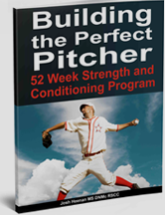How To Stop UCL Injuries: The 90MPH Formula
Those familiar with my work know I believe we can stop much of the UCL epidemic with proper screening, training, and logical progressions for athletes.

Camp, C. L., Conte, S., D’Angelo, J., & Fealy, S. (2017). Epidemiology of Ulnar Collateral Ligament Reconstruction in Major and Minor League Baseball Pitchers: Comprehensive Report on 1,313 Cases. Orthopaedic Journal of Sports Medicine, 5(7 suppl6).
Looking at the current research on valgus stress levels that the ulnar collateral ligament is up to 3 times weaker than the amount of force is exerted on a throw with a baseball.
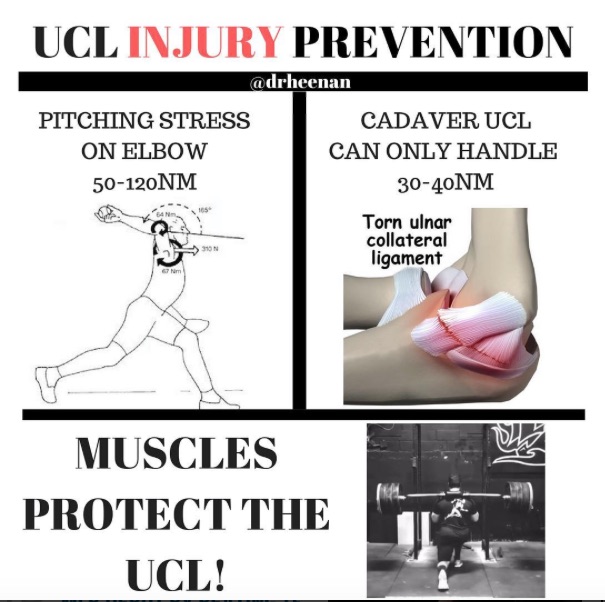
Based on our current understanding that a UCL cannot alone handle the force that throwing a baseball puts on it, we can make the case for muscular size and strength (within the specificity of the throwing motion) as main factors that protect the UCL from being strained or torn.
With 1100 baseball players having tested the criteria of the 90MPH Formula and only having 2 reported cases where an athlete could hit the metrics of the formula and needed UCL reconstruction (worth noting neither of these were our athletes local or remote clients). We have had close to 50 as of this post that reported unable to hit the parameters and had UCL reconstruction. Although the collection of the data was not done in a formalize setting, we are working on a formalized study so we can draw better correlations with quality research.

With all of these data points, we can start to draw correlations:⠀
-If you can hit the metrics, you can throw 90mph (or harder).
-If you can’t hit the metrics but can throw 90mph, you are exponentially more likely for an elbow or shoulder injury (UCL surgery most often reported).
⠀
Correlation to increased velo (in order):
1) bodyweight
2) reverse lunge
3) chin-up
4) deadlift
⠀
Correlation to decrease risk of injury (in order):
1) chin-up
2) reverse lunge
3) deadlift
4) bodyweight
⠀
My current thoughts:
-Long toss is still an underrated tool.
-Weighted balls should be used minimally prior to mastering a reverse lunge with your bw on the bar and 10 perfect bodyweight chin-ups.
-Optimal bodyweight is 2.75-3.25 x height in inches
-A 1.5x bodyweight reverse lunge is likely a replacement for 10 reps with bodyweight on the bar.
-Position players that reverse lunge 1.75x bodyweight (1rm) can run a 6.5 or less if they incorporate hill sprints and plyos as they are reaching those levels of strength.
-PO don’t sprint enough to have those strength gains carry over to elite level speed.
-Reverse lunges seem to be HIGHLY correlated to mound velocity, exit velocity, and 10/20/40/60 yard dash times.
-People seem to think I only like reverse lunges which is untrue. There are a ton of ways to increase your reverse lunge. Use what you need to get the reverse lunge to increase.
-Squatting (esp a true box squat) offer a ton of pros to getting you stronger and more athletic, they just don’t correlate to increased velo or decreased sprint times as well as lunges.
-Most high level athletes can achieve many of these numbers with one solid year of training year round. And yes, if you are not training year round I think you are going to spin your wheels for most of your career.
-Deadlift doesn’t seem to correlate well to injury prevention, but I do see a great value for it in terms of force production and adapted muscle mass. However, a 600lb deadlift doesn’t mean you should throw 110mph.
We may not have all the answers, but these correlations should allow athletes, coaches, and parents to utilize the above information in a progressive manner to start to reduce the UCL surgery epidemic we are seeing.
YOU MUST EARN THE RIGHT TO THROW HARD AND STAY HEALTHY!
Are You Ready For a College Baseball Showcase?
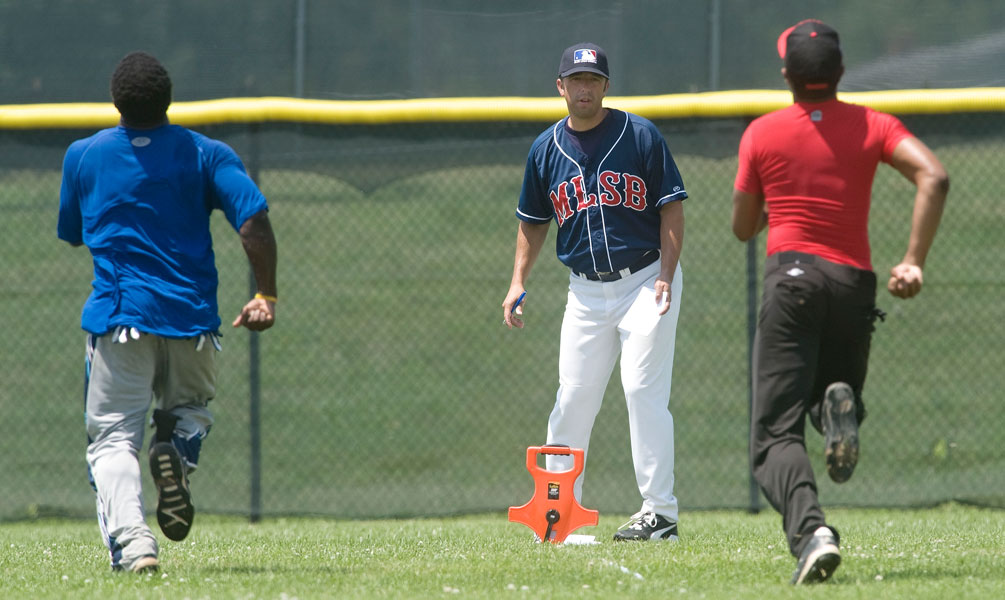
Summer time is almost here and for many high school players wishing to play college baseball this means showcase season. Showcases are a double edge sward. There are some outstanding showcases that allow you the opportunity to interact in with college coaches at schools you have interest in while getting a feel for their personality, skill set, and coaching style (yes, you are interviewing them as much as they are you). On the other end of the spectrum, there are factory style showcases that allow you and 500 other ball players just enough time to take 3 ground balls, 10 swings, and run a 60 all for the camera and then you are done for the day. Not the ideal situation for most.
I like to remind my athletes that a showcase is a job interview. A part of getting the job is absolutely how well you perform, but do you look the part? How well do you interact with the other players? What are your interactions with coaches? Do you look like you are having fun? Remember coaches are looking for people they want to have apart of their baseball family for 20-60 hours a week for 4-5 years!
ARE YOU READY FOR A SHOWCASE?
- Have you done skill work for baseball at least 2x per week outside of practice?Realize that practice is just the beginning. Routinely, our college guys take swings from 8-10pm on a Friday night. If you are not working on your skills while your competition is out partying on a regular basis you rarely have a leg up on them.
- Have you trained in the weight room at least 2x per week for the last 3-months?
If not, you are at a distinct disadvantage in regards to athletic potential and injury prevention. I believe for an athlete to even bother to go to a showcase he should have a solid 3-6 months minimum of organized training under their belt. If you don’t enjoy the process of getting better and training, you will likily not make a great college player.Check out this day in the life of a college baseball player article https://www.theodysseyonline.com/college-baseball-the-16-hour-day
- Have you recently taken a video of your 60-yard dash?I can’t tell you how many athletes tell me they run a 6.8-7.0 60-yard dash and when I ask them for a video of it they can only produce a video of them running an 8.2. Video does not lie. Get over the fact that you are not fast and figure out how to fix it.Unless you are a pitcher that throws mid 80s+ MPH or skill position guy that can legit hit the ball 400 feet, I would not recommend showing off your “skills” unless you run below a 7.5 60-yard dash.
- Have you recently taken a video of yourself… pitching, fielding, hitting?Pitchers —get on video with multiple shots at different angles— and at least one behind the backstop with a radar gun in view.Hitters —get a few views of you swinging and fielding/throwing.For all position, be honest with yourself. How athletic do you look? What do your mechanics and movements look like compared to the MLB version of you? Adjust accordingly.
- What’s your GPA?We all hear stories of guys who throw 90 MPH and rock a 2.0 GPA and he got a college scholarship, but let’s face it, you are probably not that guy— and that story was probably fabricated.Just like point #3, unless you are a pitcher throws mid 80s+ MPH or skill position guy that can legit hit the ball 400 feet, I would skip the showcase if your GPA is under a 2.5. Do yourself a favor and take summer classes to bring your GPA to that 3.0 range.Don’t think it really matters? Ask any DI program what their minimum team GPA and SAT scores need to be.
- Do you look the part?Coaches will say that looking the part is not that important as they are looking more for the skill and potential of the player but in my experience, this is incorrect. In fact, I often hear coaches state things like “look at that guy, he has obviously put in the work in the weight room” or “this kid swings well, but he needs to figure out where the kitchen is”.
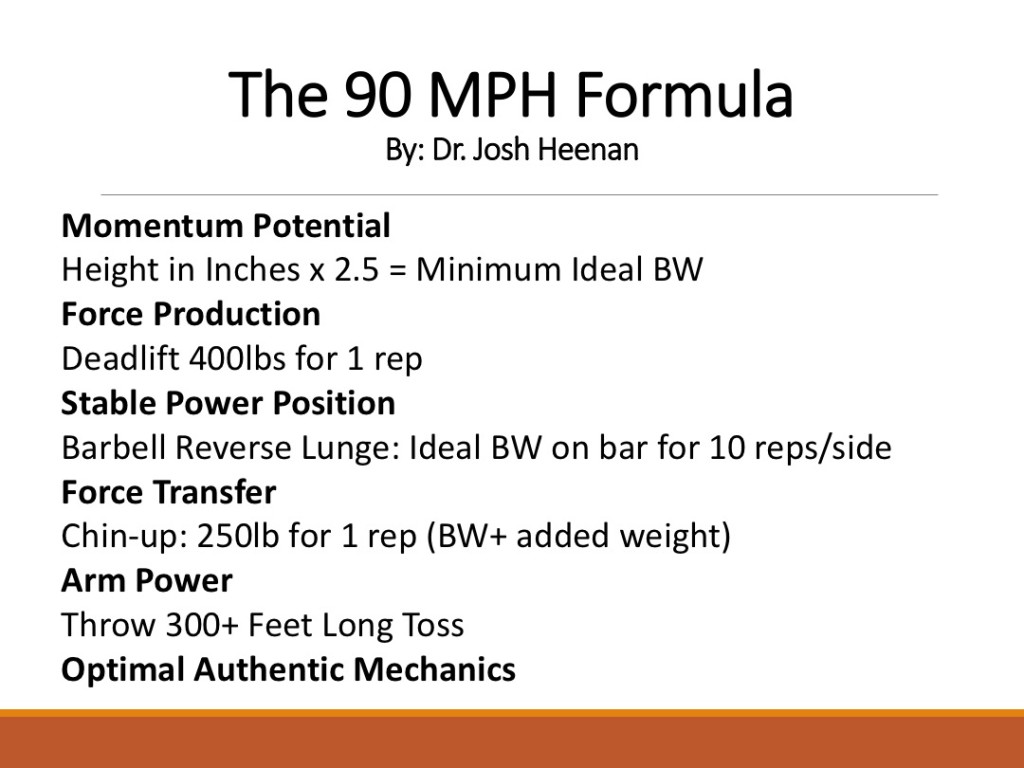 My 90 MPH formula for pitchers gives a guideline on weight I like to see our pitchers at. It get’s a little trickier for position players, but as a general rule, take your height in inches and multiple it by 2.5 and that is a good baseline for most athletes to start “looking the part”.
My 90 MPH formula for pitchers gives a guideline on weight I like to see our pitchers at. It get’s a little trickier for position players, but as a general rule, take your height in inches and multiple it by 2.5 and that is a good baseline for most athletes to start “looking the part”.
What other aspects do you think are important at your showcase? Where do you think you are lacking the most?
Leave your feedback below in the comments and I will gladly reply.
From No Offers to DI Baseball Player
I can’t get recruited
I get overlooked
My son doesn’t get fair playing time
They are prejudice because I’m too… short, skinny, slow, etc.
These are phrases we hear all the time.
The “I get over looked… I can’t… my coach…” garbage is just that, garbage. When presented with athletes or families that come saying those phrases we try to change word choice and outlook from day one. Many think they are going to be the next Bryce Harper, but let’s face it, the odds are highly against you.
To be fair, we are lucky to have many amazing athletes and families that are supportive and realistic with where they currently are and where they need to go to reach their goals.
Enter Tom Henderson
After working a showcase with Wayne Mazzoni, he suggested I reached out to Tom as he was a LHP senior in high school with good arm action, good grades, but just needed to get bigger and stronger to have a chance at the next level.
Tom was a whopping 135 lbs at 6’2″ with strength to match his frame— practically none.

Completely out of his comfort zone, Tom came to train 3-4x a week for the next 12 weeks along side pro, college, and signed high school ball players. Being able to do only 1 push-up on day one is pretty humbling when you have athletes tossing around 100lb dumbbells or 14-year olds doing 20 push-ups in a set.
But bust his butt day in and day out he did
After about 2 weeks we sat down and had our nutritional talk. We evaluated where he currently was with his eating and created a plan on how to add some serious size to his frame over the next 12 weeks. We implemented simple weekly check-ins to monitor progress, but attached some deterrents for each missed a weigh-in.
Tom soon felt what it was like to be truly “full”. The first weekly weigh-in he was up 5 lbs. Second week, another 4. Third week, another 4. For those 12 weeks, Tom treated eating like it was a full time job.
Those 12 weeks passed without a missed weigh-in and Tom was now tipping the scales at 170lbs. Along with his new found weight, his strength gains were impressive to say the least. Push-ups had become relatively easy and his deadlift was up over 100 lbs. Most importantly, Tom’s velocity on the mound had jumped.
Prior to his weight gain adventure, I promised Tom if he put in the work, I would vouch for him at his #1 prospective school, Marist College. Upon speaking with the coach I realized they had no more roster spots for the following year. Without any hesitation, Tom said he would end up going there when he was accepted and walk on. Little did he know that 6 weeks later I would get a call from that coach stating they just cut a handful of guys from there program and wanted to extend a roster spot for Tom for the coming year.
Fast forward to today
Tom is now a role player for his DI program and touts a .077 batting average against. Currently sitting at 185lbs with a fastball that nearly tops the 90mph mark. With a frame that can still handle adding another 30-40lbs and project him to add another 5-10 mph on his fastball and 3 more years of eligibility, Tom has a lot to look forward to.
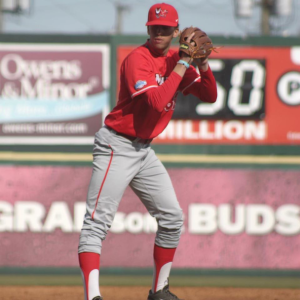
Without Josh’s expertise and connections I would not have had the opportunity to play baseball at Marist College. Josh, along with his terrific staff, have pushed me for two years, and have helped me gain a total of 60 lbs, 35 of those in my first 12 weeks of training. This weight has taken stress of my elbow and shoulder while allowing me to increase my velocity by upwards of 10 MPH, nearing 90 MPH. The key to our training is the focus on muscles and movements that put by body in better positions on the mound, which directly correlates to what you need to continue to succeed and play at the next level.
Are these the type of results you are looking for?
Email me for more information about our remote programming platform, go to https://advancedtherapyperformance.com/90mphformula/
12-Week Weight Gain Coaching For Baseball Players
12-weeks ago a group of readers started my private distance weight gain program. After an initial evaluation, movement screen, and goal setting we proceeded with both a training and nutritional plan for each athlete.
The groups average results were:
-20lbs of bodyweight gained
-100+ lbs added to their front squat
-125+ lbs added to their deadlift
-10+ reps added to their chin-ups
I couldn’t be more proud of these athletes (and families!) for making the short term sacrifice of eating a large amount of food and truly dedicating themselves to hard training.
Although we do have one problem
I promised the person with the most dramatic transformation to receive a full refund for their hard work. After much deliberation with my colleagues, we have not been able to determine a winner, so I am enlisting you, my readers to help choose a winner.
Please Vote Below– Voting Ends Friday February 5th at Midnight!
Brad
Today I weight 221, a total weight gain of 23lbs. I have been consistent with weight training throughout the entire 12 weeks. I was able to do a dead lift of 255 as of the end of my weight training. Before I started this training, the most I was attempting was 135. When I started I was doing about 4 or 5 chin ups, now I can do 12. Since baseball practice started I have gone out and am only throwing about 70% effort and my coach noticed I’m throwing harder than last year. When I was pitching I was able to get 8 batters out in 25 pitches at practice. The most important thing is that a college coach I’m talking to noticed the big change in my size since I went to their training camp in the summer and they asked me to throw a “tryout” bullpen at the college next week. Each week I followed your advice and I never had a hard time reaching the weight goals; I was usually ahead of schedule. My goal was to get to 220 and I reached that with 2 weeks to go to the end of the weight program.
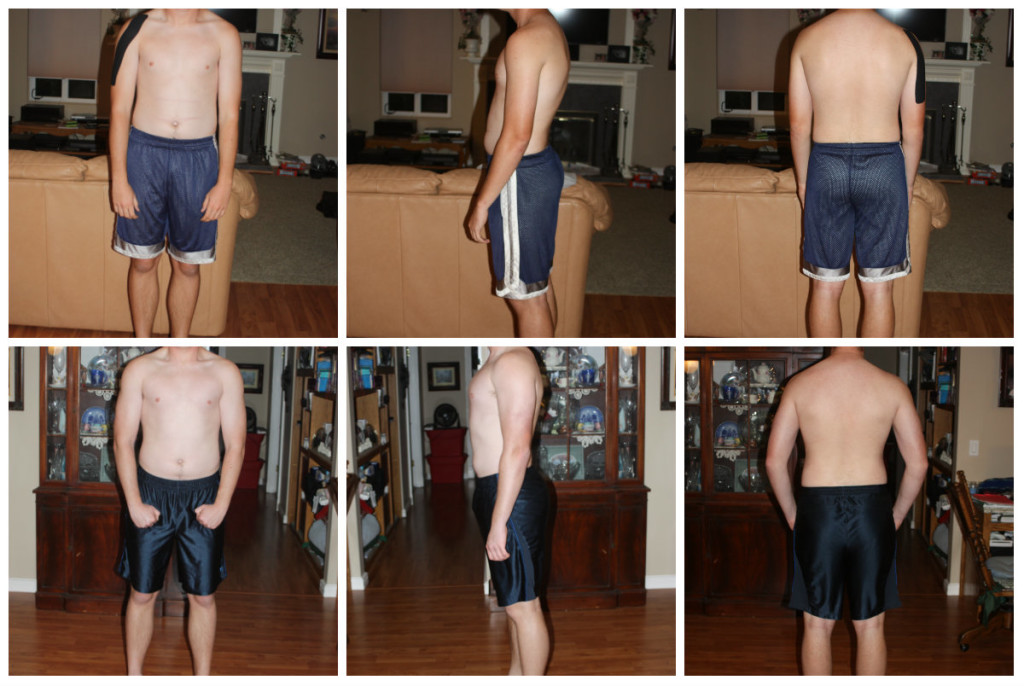
Garrett
First off, thanks for making my money well spent whether or not Garrett wins the contest. I can tell a difference as well as many friends and family.
Though he didn’t meet the full expectations; we offer the following results:
Total weight gain – 139lb to 159lb
Squats – 135lb to 200lb
Chin-ups – 6 to 25
Pushups – 30 to 70
Dumbbell incline press – 30 lb to 60lb
these are all his working weights, not max outs. – Garrett’s Father
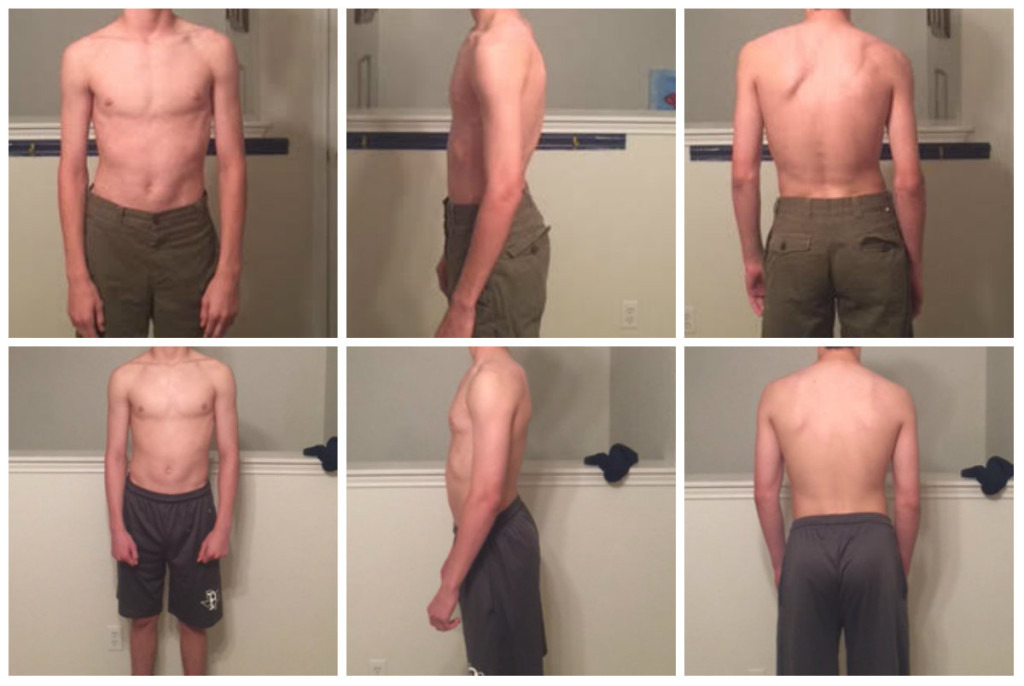
Keanu
My current weight is 171.8 after starting off on an even 148. Being up almost 24 lbs seems huge for 12-weeks worth of work. Strength wise I’ve been noticing major increases in each and every workout, but I haven’t been keeping track of how much exactly except in certain workouts like my rows being up 30 lbs and my deadlift going up 150+ lbs with a max that’s just shy of 200 lbs more than when I first started the program.
This whole experience has been very critical to me in not only playing baseball going forward, but in life because I always wanted to become a bigger person and weighing 150 on a good day wasn’t going to get me anywhere I wanted to go. I wish I could be gained more in this 3 month span, but I’ve learned a lot about how much I need to eat, on top of taking protein and creatine consistently. This definitely won’t be the end of my quest to gain muscle mass and I will without a doubt take what I have learned and incorporate it into my everyday life to become a stronger and better baseball player. Thank you for this opportunity, Josh.

What Does A 100MPH Fastball Look Like In The Gym?
Throwing 100MPH is the goal of many baseball players, pitchers and position players alike. 100 MPH is a tremendous goal, but to be realistic, on average less than 10 MLB pitchers touch 100MPH per season. There is a reason why guys like Aroldis Chapman make 8 million a year.
So how do you create the ability to throw that hard?
Great arm mechanics? YEP
Shoulder-hip separation? YEP
Adequate stride length? YEP
There is no substitute for great arm mechanics and throwing with maximum intent, but many throwers have pretty good arm mechanics and throw with intent. The biggest difference I see with our extremely hard throwers (95+MPH) is they are BIGGER AND STRONGER than those who throw with less velocity.
A great example of this is one of our guys in the Brewers Organization, Alex Farina. Alex touched 95 with regularity in his first season of pro ball.
Returning from the season Alex was a solid 215lbs. Not bad for a 6-foot tall athlete, but we knew he had some growing to do and some strength to gain.
Fast forward 5 months
Alex has busted his butt both in the weight room and kitchen. As of February 1st, he will be a solid 240 lbs. That’s a solid 25lbs to his frame in less than 5 months. What’s just as impressive (AND IMPORTANT!) is that his strength gains have matched every new pound of bodyweight. Sure, he can now deadlift over 600lbs and perform strict chin-ups with 75lbs of external load… for reps… BUT the real impressive feat of strength and power for Alex is his reverse lunge. See below
Many professional athletes wish to posses a 335lb back squat, their dream back squat is what Alex puts on his back and lunges… for reps.
Technique and position are incredibly important to our programming as this prevents injuries and allows us to transfer strength gains to the on-field needs of the athlete.
Think the lunge position matters to throw hard?

WE DO!
So what is your next step today to throw harder?
Check out our on-site and remote programming services at http://www.advancedtherapyperformance.com/
5 Reasons Why You Can’t Gain Weight
Having coached hundreds both in person and as distance clients that routinely put on 20-30lbs in their first 12 weeks of training. I can vouch that many are dedicated to reaching their goals but often have 1-2 major faults that inhibit them from putting on the weight they desire.
Here are my top 5 reasons why people are unsuccessful in gaining weight
5- You are not training with intensity
It’s beyond the scope of this article to dictate if you are on the correct training program or not to gain weight, but regardless of the program, you need to be training with intensity.
Intense training will create the physiological effects that will signal your body to increase muscle mass. Just as important, a solid training program executed with intensity will help increase appetite and allow you to consume more calories over time.
Don’t go through the motions, Train your butt off.
4- You don’t prioritize sleep
Sleep is the time to recover and grow.
Many athletes stay up watching TV and playing video games until 2-4am. Leaving them only 4-6 hours to sleep. When you are able to get deep sleep, your body produces a hormone profile that is optimal for increasing muscle mass and dropping body fat.
For more tips on sleep check out my T-nation article 4 Sleep Strategies for Athletes’
3- You don’t meal prep
This one drives me absolutely nuts.
Without preparing your food in advance you are going to find it near impossible to get enough food in throughout the day. Unless you are a professional athlete, you have to contend with class and/or work on top of everyday life. Having a bunch of meals prepared and snacks always by your side is the easiest way to reach your goals.
I’ve had high school athletes hide PB&J in their backpacks and sneak them in during class or in between class.
I’ve had professional athletes prepare 10-20 meals prior to a long road trip where they know the only options will be McDonald’s for for dinner just about every night.
It doesn’t matter how you get it done, you need to consume enough nutrients for your body to grow. Make it easy on yourself and pack your meals.
2- You have the wrong mindset
Being a skinny kid gaining weight is uncomfortable. It requires preparation, extra time cooking, extra time cleaning, extra time eating, and food will get boring.
GET OVER IT
If it was easy EVERYONE would be their ideal bodyweight, throw 95MPH, and drop 500 foot bombs.
Having a task oriented mindset and understanding that being uncomfortable is a part of the process.
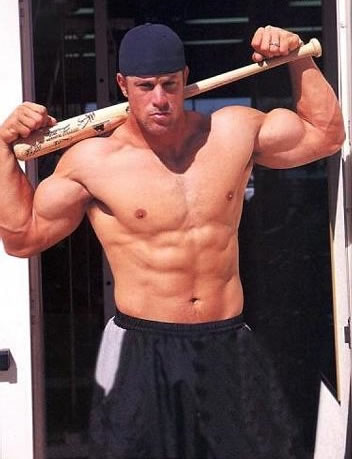
1- You do not have big enough consequences and a support team
I’m a big fan of S.M.A.R.T. goals.
Specific
Measurable
Achievable
Results-focused
Time-bound
Every weight gain athlete I’ve ever had in person or distance coached has implemented S.M.A.R.T. goals with weekly check-ins. These small weekly goals along with surrounding yourself with a team who has the experience and knowledge of how to add some serious weight in a short amount of time makes a world of difference. In our Southport facility, some of the best coaches we have are athletes who have previously gained 30-40 lbs in previous years talking to other athletes.
In regards to consequences, rarely does anyone ever fails to reach their goal when the stakes are high enough. In house, athletes often pick the punishment of eating a can of dog food if they miss a weekly goal. No wonder why no one misses goals.
Move Fast, Throw Hard, Live Well – Early Off-Season
With the fall upon us and our baseball guys entering their off-season, we get an increase in volume of athletes looking to overhaul their fitness and performance training. The follow articles offer good info for the early off-season.
A Peek Into The Sleep Habits Of Teenagers Around The World – Sleep length and quality is not only important for recovery from training and sport, but is immense for long-term health. Sleep is one of the most abused recovery tool we have available for each and every athlete.
High Level Throwing – I had the pleasure of meeting Austin this past winter. Austin does a great job at breaking down high level throwing mechanics. This is the perfect time of year to implement Austin’s tools to fix your mechanics.
Why Your Conditioning is Hurting Your Performance on the Mound – This throwback article gives some insight to how we condition pitcher and prepare our position players to have a powerful first step.
Alex Farina Signs with Milwaukee Brewers
On August 2nd 2013, I made the following post on facebook:
As I mentioned in that post, Alex is the type of client that makes me look great. Simply put, my job is to keep our athletes healthy and progressing while providing guidance wherever needed. For an athlete like Alex who shows up early, stays late, listens, asks well thought out questions, is process oriented, and consistent– he will be successful no matter what he puts his mind to.
Alex spent the summer entering his junior year of college split between the New England Collegiate Baseball League and the Cape Cod Baseball League. Having MLB scouts show interest there was some talk of getting drafted junior year, but to be honest, coming from a program with 3 draft picks in the last 34 years, it was a long shot and not expected.
Eventually, the draft came and went without a call and he reported back to the NECBL for the summer. During that time we spoke openly about how the next 12 months were going to go. The primary goal was to graduate on time with his mechanical engineering degree and play affiliated pro-ball whether or not he was drafted.
Speeding up to present time, Alex earned his degree and got the call he was waiting for from the Brewers and as I write this he is on a plane to their Arizona Rookie Ball affiliate. A well-earned opportunity for someone who dedicated themselves to taking one step at a time, staying focused, and never excepting anything less than being better than yesterday. That is how big goals are accomplished and dreams are realized.
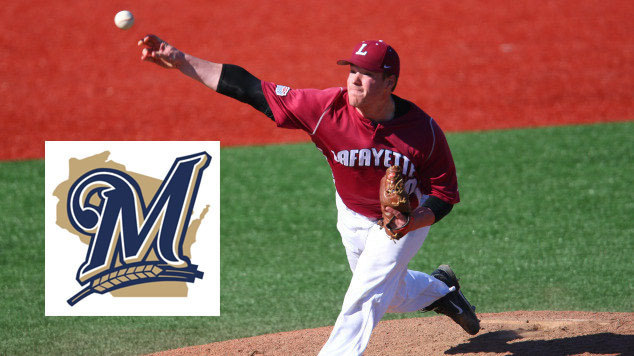
Add Muscle Mass, Get Recruited and Drafted
With the rigorous in-season schedule of games, practice, school, and life adding lean muscle mass can be very challenging. Add in distance running, hot weather, and a lack of training it can feel impossible to maintain bodyweight, let alone add some clean LBS to a wiry frame.
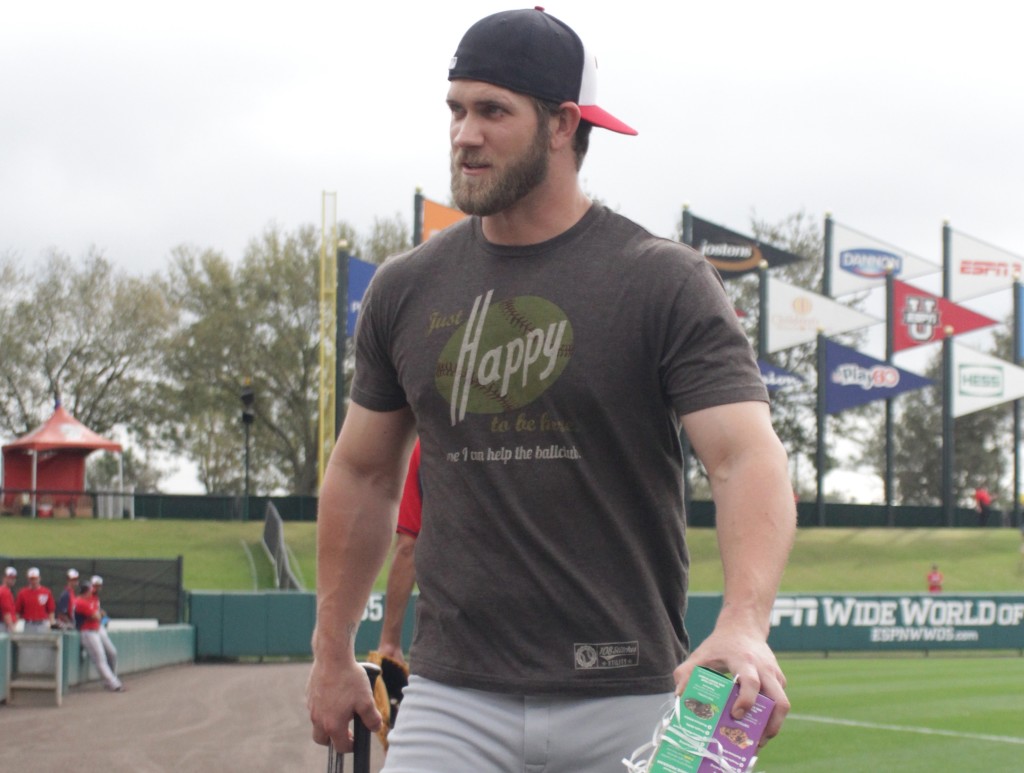
Why is muscle mass so important?
Muscle mass and increased bodyweight increases potential force output, which is one of the keys when trying to run faster and throw harder. Not only is added muscle mass important for injury prevention, but it terms of health and longevity there are few indicators better than muscle mass.
I held a webinar last year and release my “90 MPH Formula”. As you can see below, I’m a huge believer that strength gains and bodyweight are near necessity to throwing above 90. Mechanics and a whole host of factors play into this, but my athletes have shown me the information listed is accurate over and over again.

I encourage you to compare your favorite collegiate or MLB team roster to the “90 MPH Formula”.
The performance indicators and decreased risk of injury are great for athletes, but why else would this matter for collegiate coaches and MLB organizations?
Dedication/Toughness
For the most athletes, adding a significant amount of muscle mass requires intense dedication. Having seen 100+ athletes add 20 lbs in 10 weeks, I know this is not for the faint of heart. The ones who go on to add 30-40 lbs over a 6 month period have a level of need for the weight and self-discipline that is impressive to say the least. Dedication, toughness, and sacrifice for a larger goal (like significant muscle gain) is something all highly competitive teams want.
Projectable/Image
Baseball, like most sports, is highly speculative. As I tell our draft eligible guys, all it takes is one scout to fall in love with you and you will be picked up. Same holds true for college coaches. Being undersized by 30-50lbs while being scouted or recruited is going to portray a less than ideal image of what you can offer, even if you are an exceptional athlete. As one of my good friends often says “dress for the job you want, not the job you have” prior to your college visits or your draft eligibility it is important to present yourself physically prepared for that next level of play. Leverage your opportunity to have those coaches speculate you are the hardest worker they have ever met.
During the first day of the MLB draft coverage, the hosts continually commented about how a bunch of the athletes were “gym rats”. They classified these guys as “workers” and would be an asset to each ball club they were about to join. Many college and pro organizations see the value of athletes who train hard, are more durable, and reach their potentials. Take the time now to dedicate yourself to being consistent while training hard and smart year-round.
Move Fast, Throw Hard, Live Well – Development is a process, not a destination.
With the draft only a few days away, this list will bode well for many of my clients and readers hoping to one day be drafted.
88 percent of NFL draft picks played multiple sports
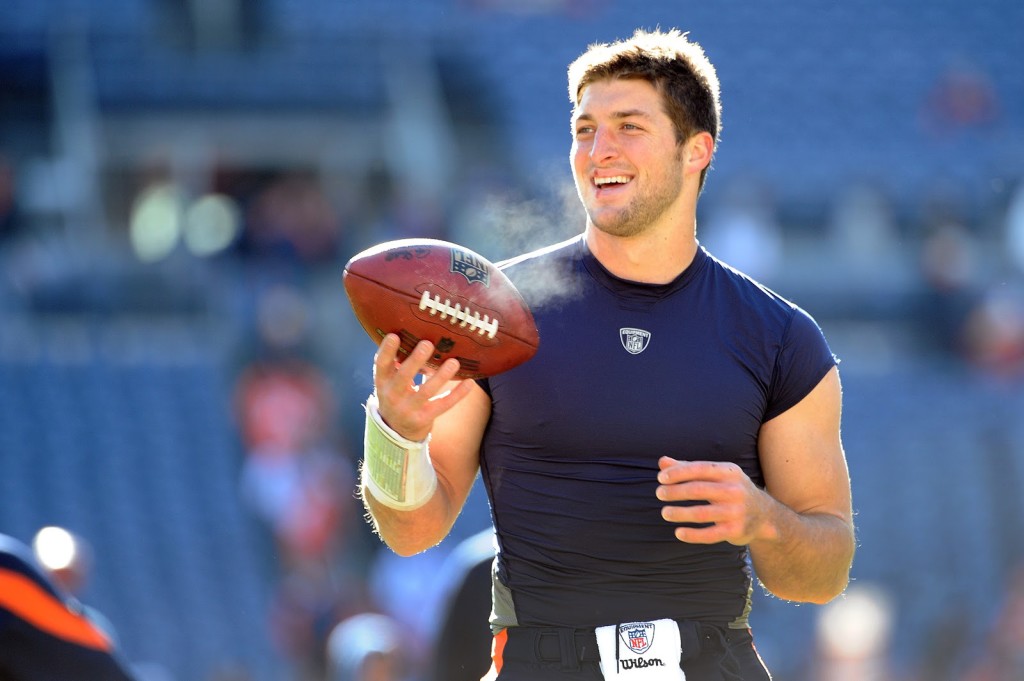
“According to TrackingFootball.com, 224 of the 256 players chosen during the draft were multi-sport athletes in high school. Of all draftees, 63% participated in track and field, 48% played basketball and 10% played baseball.”
Research has been pointing athletes towards playing multiple sports for maximum athleticism and decreased risk of overuse injury for years now. In my collegiate and clinical coaching experience, anecdotal evidence has been overwhelming that multi-sport athletes are healthier and reach high levels than their specialized counterparts.
Cubs manager Joe Maddon speaks out against specialization
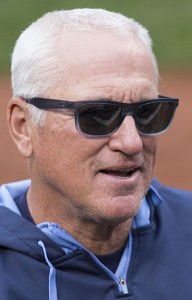
“I hate the specialization with kids, when they’re playing on these travel squads when they’re like 12, 13, 14 years old, only dedicated to one thing, Traveling all the time. Paying exorbitant amounts of money to play baseball with hopes they’re going to become a professional baseball player. “I think that’s crazy. I love cross-pollination when it comes to athletes, You get guys that did not just play baseball, meaning they’ve been around a different set of coaches and styles and ways to get in shape and thoughts. I love that.” Maddon said
Many parents I speak to are terrified that their child will not be prepared to play a high level of high school sport, will not get a scholarship, and will not get drafted. I understand the worry, but many are racing the wrong race. The goal should be to maximize enjoyment of the game, become as athletic as one can become, and keep on developing. Development is a process, not a destination.
3 Eating Secrets to Bulk Up Fast
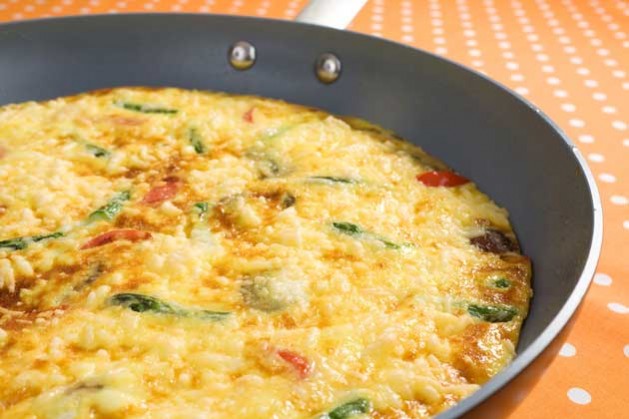
This week I have been bombarded with muscle gain and weight gain questions. With the summer approaching, many athletes are looking to pack on weight while playing and training hard. This can be tough, but is done every year in our gym— usually 20-30lbs in a 3-month window. These three tips help many of our ball players stay on track during these bulking phases.









